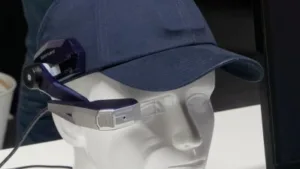Most of Daqri‘s developments in the last year have been in software as it produced its helmets in 2016 and its glasses in 2017. At the show, the company was highlighting its Worksense software which is intended to allow AR applications to be developed by professionals that are not coders, as no coding is needed at all. The software is built around five verbs that Daqri found were common to many developers of AR. They are:
- Show (combine video, voice and 3D annotations)
- Tag (add critical information and notes to real world facilities and objects)
- Scan (map the environment to create photorealistic shareable 3D models)
- Model (convert CAD objects for use)
- Guide (adding documents and task instructions)
The company is still working on developing hardware and wouldn’t be drawn on exactly what they are working on, but did suggest that we watch out for news in early 2019!
French engineering and CAD company, Dassault, told us that its big message at the show was new software that allows CAD assets to be centralised in the cloud and then shared for different purposes – with output rendering performed according to the application. For example, CAD data can be used by marketing departments to create VR experiences directly to allow prospective customers to get a sense of the vehicle. On the other hand, production or design engineers can use the same data for their own purposes.
A second development trend is the inclusion of more data with CAD models. For example, by including data on the thermal properties of the materials and design of a building, as well as seeing what the interiors of a new building would look like, prospective customers could get a sense of energy usage and even the cost of heating the space.
Dassault is establishing a marketplace for applications and data based on its platform.
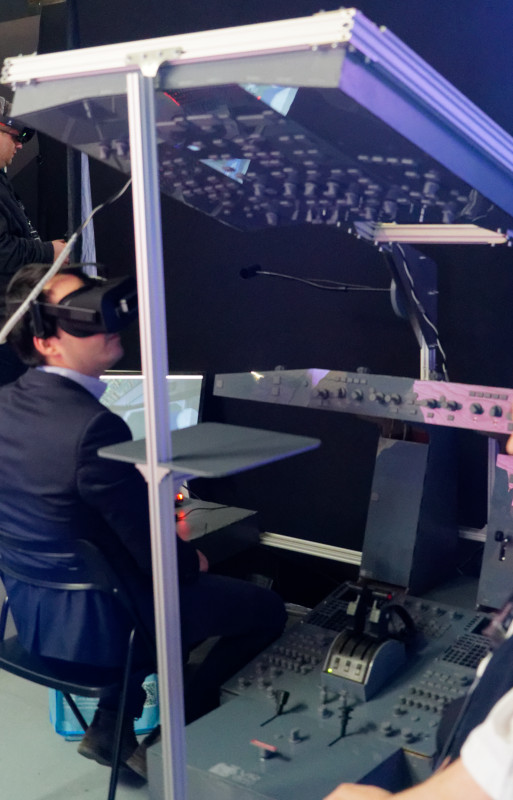 Several companies had training simulators with VR headsets and physical control systems to make the experience feel more real. Image:Meko
Several companies had training simulators with VR headsets and physical control systems to make the experience feel more real. Image:Meko
Dell had a booth but had no news and was just highlighting that its systems could be used to support VR and AR applications.
We went back to the Diota booth four times, but couldn’t get any information or attention – sometimes we wonder why companies spend so much on attending these events and then don’t staff them properly! However, we have previously spoken to the firm at events. It has an AR system that uses a projector/tablet combination that projects data onto a surface – in the case shown, the interior of an aircraft. The system can guide an operator in showing connections and riveting points. The tablet can show the image and also capture what is done.
 Diota was showing this professional AR system Image:Meko
Diota was showing this professional AR system Image:Meko
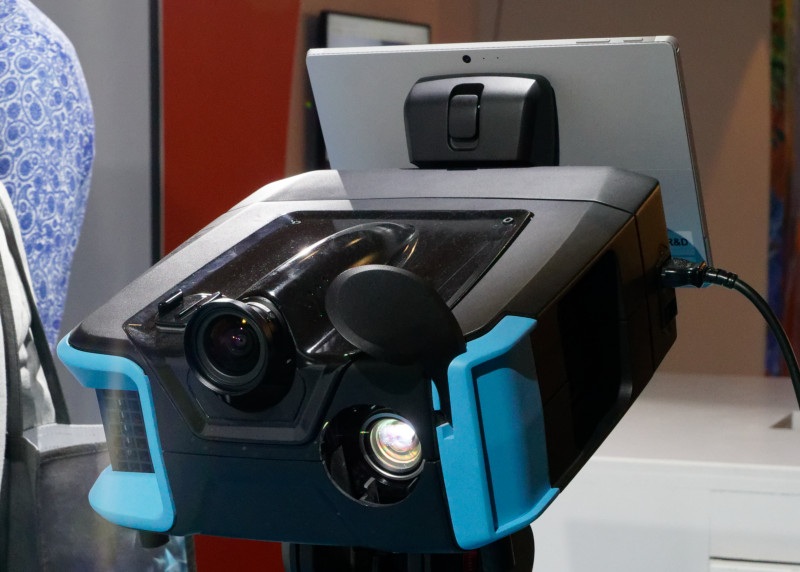 Diota’s AR projector. Image:Meko
Diota’s AR projector. Image:Meko
Microsoft was at the show promoting its Hololens in professional applications, but staff told us that it was showing nothing new.
Optinvest was another brand that we had also seen at the Wearables Show very recently and so there was nothing completely new in Laval. However, the company was highlighting the Ora-C cap. The cap was developed because some users really don’t like the glasses form factor, so the company has responded.
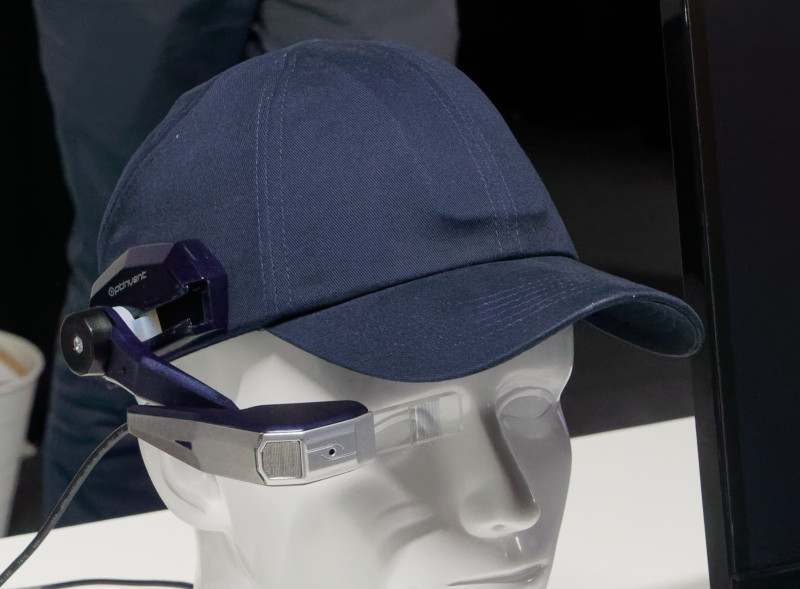 Optivent has a cap-based option to suit those that don’t like glasses. Image:Meko
Optivent has a cap-based option to suit those that don’t like glasses. Image:Meko
PNY, the specialist in graphics cards, was showing its full range including the NVS range, based on Nvidia chips and with support for up to 8 displays. There are seventeen professional graphics cards in the firm’s range. The company also drew our attention to its heavy duty workstations which are marketed under the PrevailPro name. I had to confess to the company that while they would be one of the first names on my list if I was thinking about graphics cards, I wouldn’t think of them for systems.
The company told us that it was the first to have workstations with 15.6″ FullHD or UltraHD displays and full Quadro graphics for professional applications. It currently supports the Quadro P4000 GPU (or the P3000 as an alternative, but which is not for VR) which is based on the Pascal architecture and can provide up to 4.4 TFLOPs of FP32 performance and has 8GB of GDDR5 memory. As a powerful machine, it has more than enough capacity for professional VR applications. As you might expect, there are plenty of ports with dual miniDP and HDMI supported as well as dual USB Type C.
The processor is an Intel Core i7-7700HQ seventh generation CPU with 16GB or 32GB of RAM. Storage is based on 512GB of Flash memory and up to 2TB of HDD.
Despite the high power, the system weighs in at 2.18kg. Staff told us that it thought it was typically three to six months ahead of the volume PC suppliers in getting professional workstations onto the market.
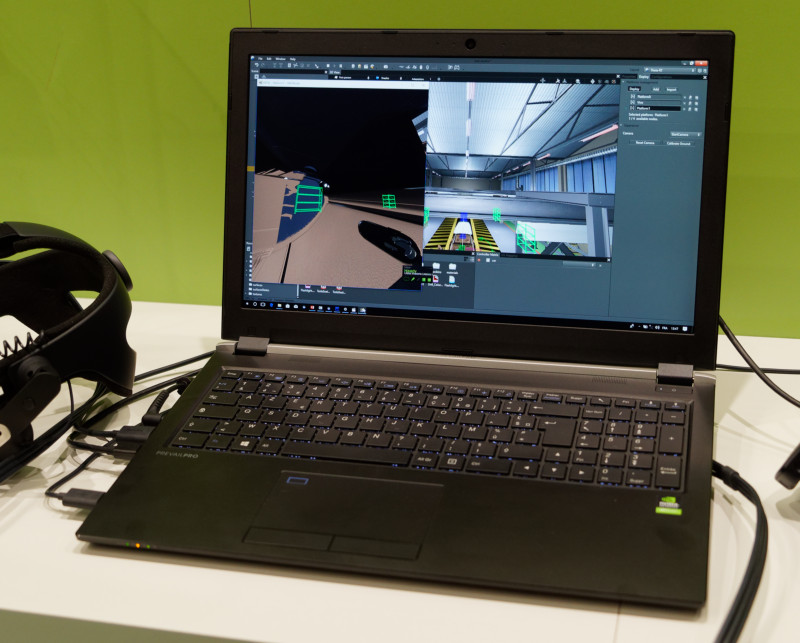 PNY has a Quadro-based workstation. Image:Meko
PNY has a Quadro-based workstation. Image:Meko
We were pleased to see that StarVR was at the show, as we have seen a couple of iterations of its headsets (it is working with Acer, among others) and it was at the show on its own account and with a partner, TechViz VR, which has developed software that supports the headsets. Unfortunately, TechViz had an oldish prototype that we had seen before and StarVR had a completely enclosed booth and was only showing its next product to prospective resellers.
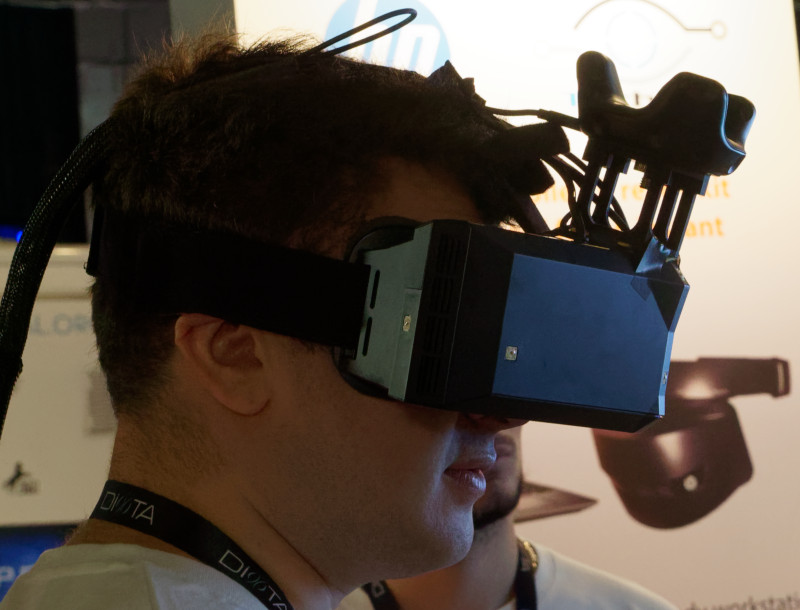 TechViz had the older StarVR headset but StarVR were not publicly showing its new headset. Image:Meko
TechViz had the older StarVR headset but StarVR were not publicly showing its new headset. Image:Meko
We told them that our readers include some of those, but it was ‘no dice’! (Your reporter has seen a lot more headsets since he last saw the StarVR headset, which uses two wide displays to give a very wide field of view. My notes say that I was still not convinced by the quality of the optics, but was quite impressed with the immersiveness from the wide field of view.)
Technicolor has an R&D centre that is in Rennes, just 25 minutes by TGV from Laval and sent along a project that it is working on for light field capture, depth processing and display. The rig at the event used 16 two megapixelo cameras in a 4 x 4 array. The cameras were each colour and geometry corrected to match (and the results looked very consistent) and each stream was being processed to create depth maps. Around 15Hz was being achieved in creating the maps. The video was then compressed and was also being rendered. Technicolor is developing IP in light fields as it sees the technology as becoming more significant in the future.
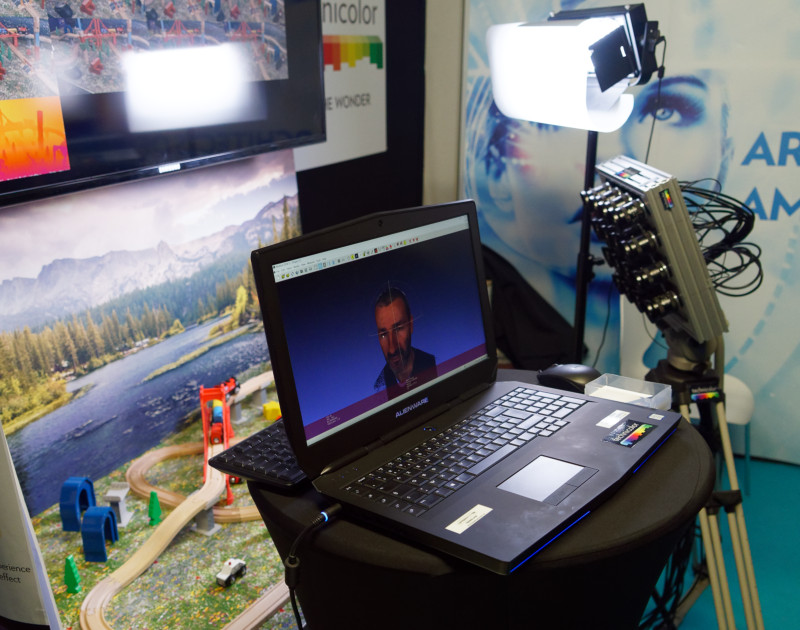 Technicolor showed a Light Field capture and render system. Image:Meko
Technicolor showed a Light Field capture and render system. Image:Meko
Tobii was highlighting the use of its gaze technology to help developers that want to see where the attention of users is directed. Also on show was an after-market add-on that it has for the HTC Vive (not the pro). The company also told us that Qualcomm is using the technology in its recently shown VR reference design.
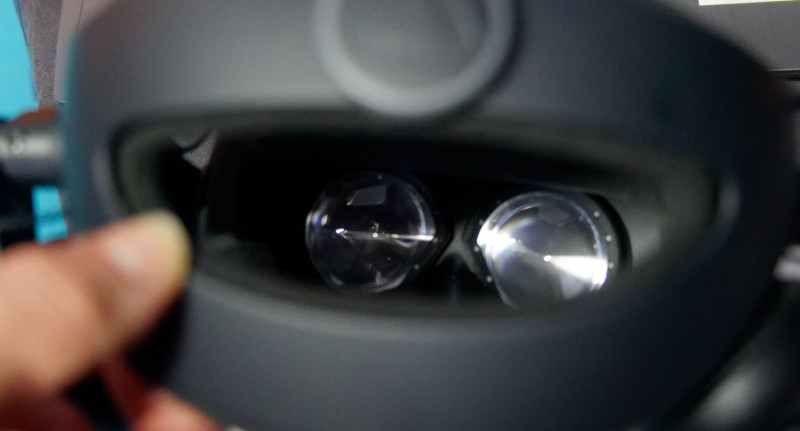 You can see the infrared LEDs around the edge of the eyepiece in this headset fitted with a Tobii gaze system. Image:Meko
You can see the infrared LEDs around the edge of the eyepiece in this headset fitted with a Tobii gaze system. Image:Meko
Trivisio was at the show, but had no new products to show us as we saw them at the Wearables show just a few weeks ago, although they were trying out a new colour that is intended to make the headset look as though it weighed less.
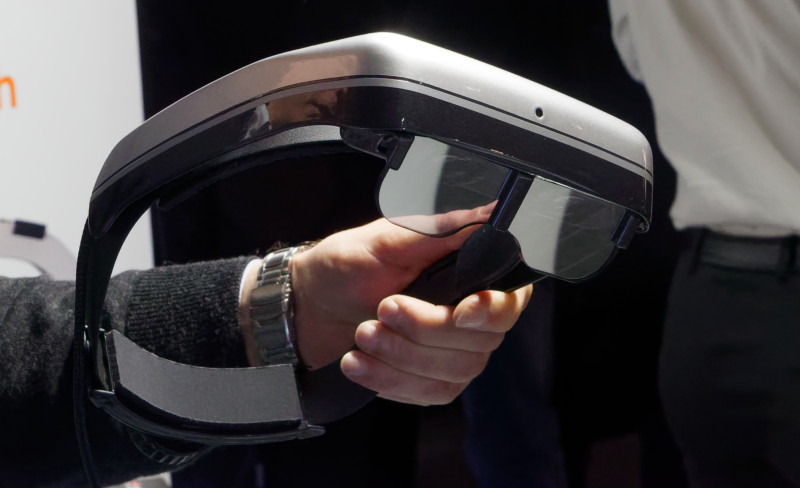 Trivisio had its headset in a new silver colour. Image:Meko
Trivisio had its headset in a new silver colour. Image:Meko
Vair Field was one of a number of university-based projects from Japan and the company is a start-up based in Akihabara. The company likes the idea of AR games and entertainment, but doesn’t think that HMDs are practical, so it uses mock guns (and bows) that hold smartphones which are used as the augmented displays. The team has a number of multi-player games using the Vair Gun (and Vair Bow). The systems use HTC-style tracking tecghnology (a common theme at the show) to detect the orientation and position of the device. The gun is designed to use different ‘magazines’ which, when loaded, have different virtual effects. An advantage of the bow over guns is that by firing over an obstacle, arrows can rain down on an enemy.
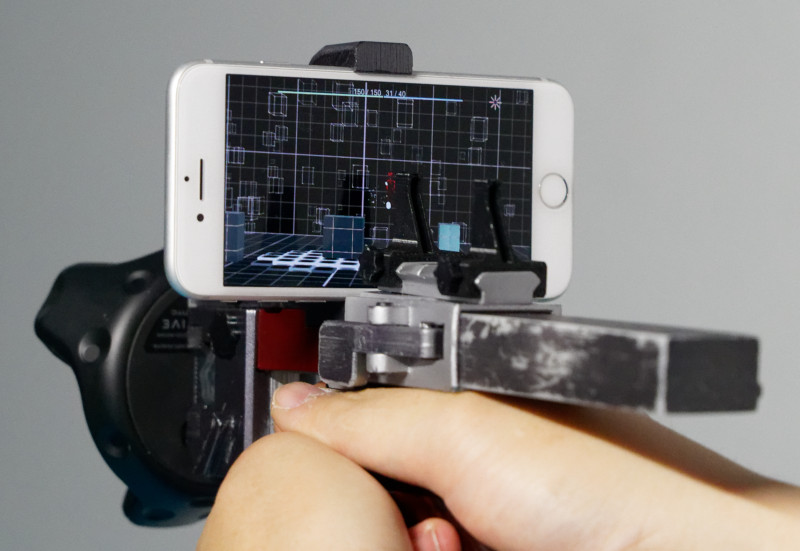 The Vair Gun uses a smartphone and an HTC tracker to allow AR gaming. Image:Meko
The Vair Gun uses a smartphone and an HTC tracker to allow AR gaming. Image:Meko
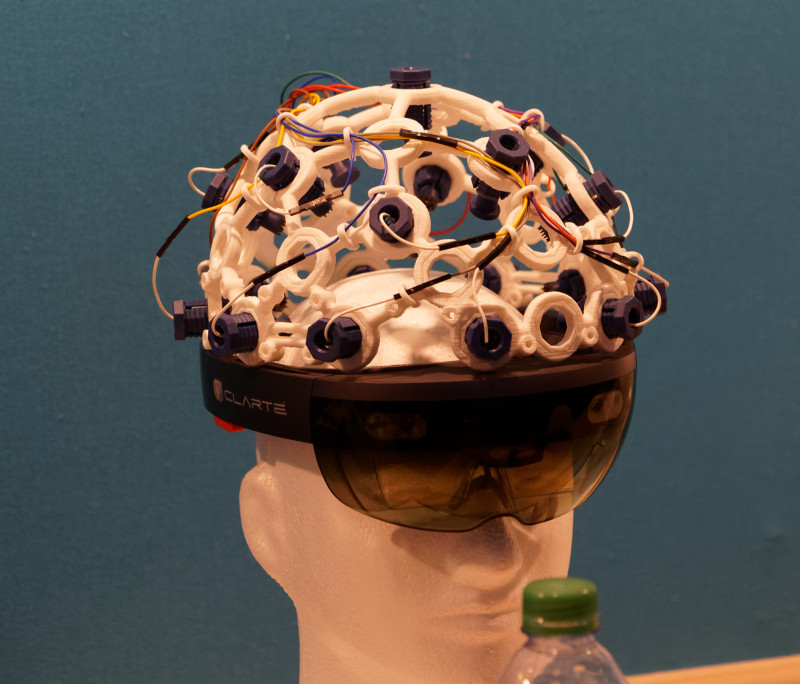 This system was based on ‘brain influenced’ VR. Image:Meko
This system was based on ‘brain influenced’ VR. Image:Meko
 This system adds sun and wind effects to make virtual experiences more real. Image:Meko
This system adds sun and wind effects to make virtual experiences more real. Image:Meko
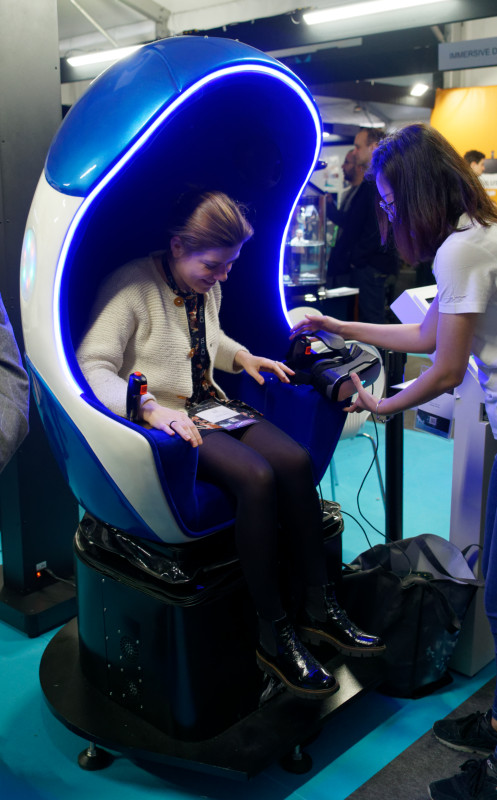 This was one of a number of solutions for VR in LBE. Image:Meko
This was one of a number of solutions for VR in LBE. Image:Meko

